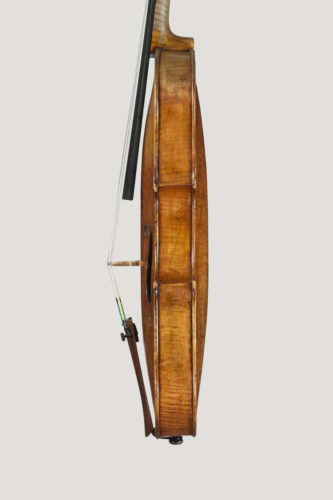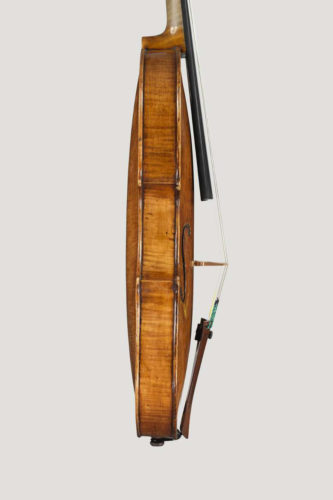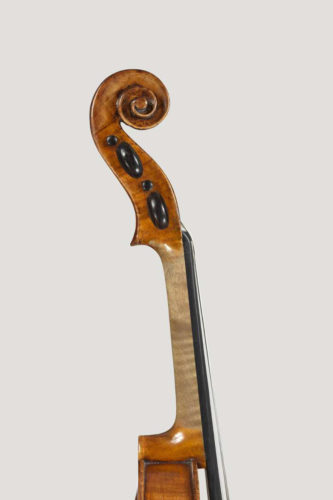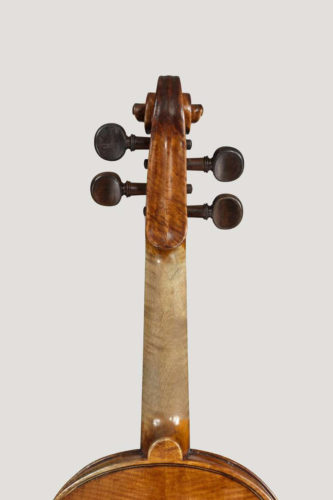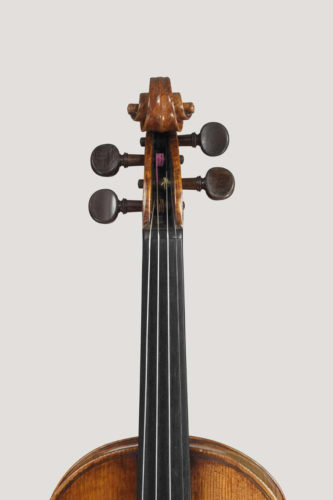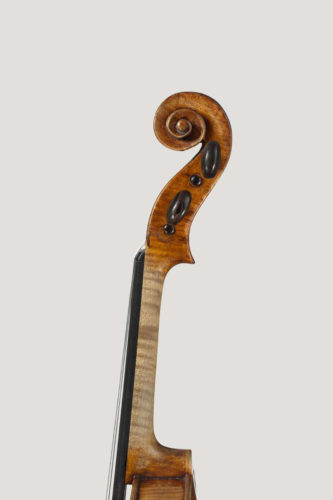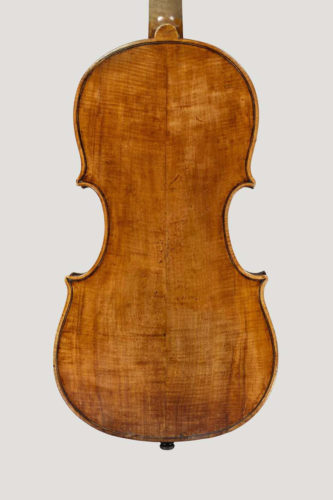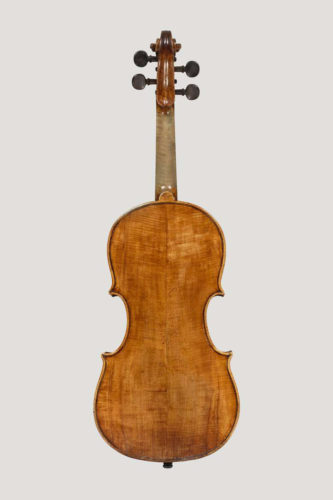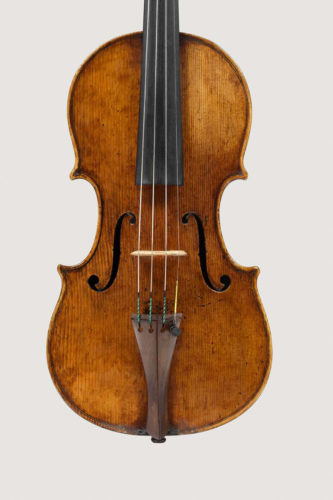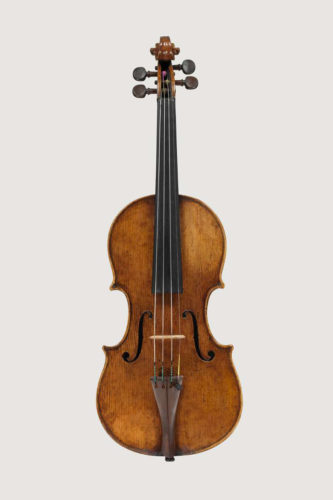Giovanni Battista Ceruti
Violin, made in 1795 in Cremona by Giovanni Baptista Ceruti. Øyvor Volle plays on this instrument.
Giovanni Baptista Ceruti was born in Sesto Cremonese, a village to the west of the city of Cremona, in 1756. According to Count Cozio di Salabue (1755-1840), he was taught violin making by one Count Luigi Maggi, of whom no further trace can be found. It is most likely that he learnt the rudiments of the craft from Nicola and Carlo Bergonzi II, who were both still active in Cremona during the early years of Ceruti’s life.
In the late 19th century Lorenzo Storioni was the dominant maker in the city, but withdrew from the profession after 1802, leaving the path clear for Ceruti to take over the role. His workmanship had developed an affinity with that of Storioni, and it is not always easy to distinguish the work of the two men during this transitional period. Gradually Ceruti’s style became more distinctive and personal, becoming more formalised and controlled, with a tougher varnish.
This example is typical of his work in the last decade of the 18th century, and is full of references to the senior maker, Storioni. The outline form is slender and measures slightly short in length, but the breast is full, and the arching strong and rounded, producing a fine depth of tone. The corners are small, and the broad purfling sits quite close to the deeply worked edge. The soundholes are long and narrow, stylistically close to Storioni’s, and are developed from a Stradivari pattern with broad wings and fairly straight arms. The head is freely cut, with a characteristically open volute and small eye, but is quite heavy across the width.
The materials reflect the type of wood seen in Storioni’s instruments, indicating the particular timber available in Cremona at this time. The richly figured Balkan maple used in the early 18th century had all but disappeared from violin makers’ workshops. The Ceruti’s back is made from the wood of a small field maple native to northern Italy, known as ‘oppio’. It was used occasionally by most of the classical Cremonese makers, including Stradivari, but is a darker, dense wood that is often flawed. The figure is characteristically small, and on this piece, quite lightly marked. The scroll is made from a similar piece with rather twisted grain. The front is of a single piece of spruce with fairly broad grain, which becomes heavier on the bass side. The use of a single, unjointed board is also a mark of economy. In the classical period, the broader grain would probably have been thought unsuitable.
The varnish is a fine, light, golden brown colour, and has some of the delicate texture of the older Cremonese recipes, certainly more so than some of the slightly heavier varnish Ceruti used in later years.
The violin is a fascinating example from an interesting period in Cremona’s history, when a handful of makers such as Storioni and Ceruti were doing their best to revive the great days of Amati, Stradivari and Guarneri, but with a diminishing market for their work and increasing competition from workshops throughout Europe. It retains the distinctive Cremonese voice, and has the authentic artistic flourish to its workmanship. It is in remarkable condition, probably one of the finest Cerutis still extant, and was used illustrate to illustrate his work in one of the standard works of violin iconography, Meister Italienischer Geigenbaukunst by Walter Hamma.

Øyvor Volle
Øyvor Volle (b. 1970) teaches violin and chamber music at Högskolan för scen och musik. She has been employed as concertmaster in the Stavanger Symphony Orchestra, and is the 1st concertmaster at the Gothenburg Opera. She is also a co-founded the Vertavo Quartet. (Photo by: Thilo Stengel)
